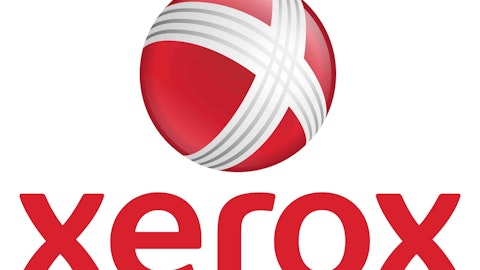Lee Ainslie, Richard Chilton, and John Levin have large position in this glass company. What could possibly be exciting about a glass company, you ask? In response, we direct you to the following videos: (Disclaimer: This is not a paid advertisement for Corning (NYSE: GLW) and I do not have any relation to the Company)
http://www.youtube.com/watch?v=6Cf7IL_eZ38 and http://www.youtube.com/watch?v=jZkHpNnXLB0
Admittedly, these are essentially company-produced advertisements, but the innovation and potential growth areas were compelling enough for us to take a closer look. Corning’s business can be broken down into Display Technologies (46% of sales), LCD glass for flat-panel displays, telecommunications (30% of sales), and environmental technologies (12% of sales).
It is no secret that GLW’s main business, Display Technologies, is faced with a maturing LCD TV market. What we are interested in is growth in the Telecom, Environmental, and Specialty segments, areas that the market has yet to fully price in. Management strives to be ahead of the curve, spending approximately 10% of revenues on R&D. Potential products down the line include designing a glass surface for the medical industry that kills bacteria and viruses and developing photovoltaic glass for solar cells.
Though glass prices have remained relatively stable, GLW has publicized its plans to prioritize price stability over volume. Our feeling is that given that GLW and its competitors have reduced capacity, glass pricing should improve by mid-year. However, we have yet to see the results of downward price pressure from panel makers who are trying to eliminate losses. A lingering concern is competition with Asahi Glass (TYO:5201). Given GLW’s outlook that glass technology competition is moving from larger substrate sizes to higher resolution, faster response time, thinner display, and higher manufacturing efficiency, it will enhance businesses that have traditionally been AGC’s strong points i.e., Lotus Glass for LTPS, Oxide-TFT, and OLED (AGC has a nearly 100% market share). GLW has already entered into a joint venture with Samsung Mobile Display to develop OLED products. AGC’s overall strategy involves expansion in China, Indonesia and Brazil, making further inroads into energy-saving glass and highly functional automotive glass, which will go head-to-head with GLW’s products.
In late February, GLW updated its first quarter guidance for lower glass volumes at Samsung Corning Precision (LCD glass JV with Samsung). GLW expects SCP volumes to be down in the low double digits quarter-over-quarter, at the low end of the prior guidance range of flat to down double digits. The lost volume and market share at SCP illustrates the intense price competition within the glass industry. Unwilling to engage in further price wars, SCP will cede volumes to NEG. However, GLW stated that it is not losing share with any other customers, and may in fact be gaining share elsewhere.
GLW’s telecom business is booming driven by optical fiber, FTTH, data centers, and wireless. Optical fiber demand is growing 10-15% in 2012 to 230-240million kms from 205million kms in 2011. There are currently 1.7 billion kms of optical fiber in the ground. Demand is strong across all regions. China is putting the most fiber in the ground and “they are really pushing hard for their LTE infrastructure to be there before everyone.” Australia is just ramping up for GLW. CFO, Jim Flaws, expects GLW to recognize $1.5 billion in revenue from the National Broadband Network (NBN) project over five years. In Europe, Telefonica (NYSE: TEF) and Portugal Tel (NYSE: PT) began the fiber-to-the-home networks and are trying to figure out how best for Europe to be able to wire up on that. Flaw thinks that “we are going to continue to see the demand because consumers demand it.” Management understands the importance in being the lowest cost manufacturer of fiber, which it believes GLW is. And since most of the Telecom revenue growth is in high margin products such as premium fiber, Telecom operating profits should grow faster than Telecom sales driving operating margin.
We like the direction GLW is heading in and management’s vision. In spite of upcoming catalysts like the Apple TV and increased touch platform usage due to Win 8, we see near-term price weakness given competitive pricing in the glass industry, uncertainty regarding customer contract negotiations, and forex headwinds (LCD glass transactions are still priced in yen except Gorilla Glass). And while we think the market is not fully appreciating the Company’s pipeline—GLW trades at ~9.0x CY12 EPS, which is a discount to its LCD peers (read more 5 Undervalued Technology Stocks)— we also think it would make more sense to assess its progress in the upcoming quarters in maintaining market share in Display Technologies, growth in non-Display initiatives, and deploying its estimated ~$2 in free cash flow before making an investment.






